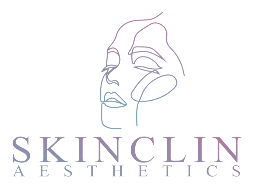16 Drug Abuse and Addiction Poems by Teens
This damage will affect academic performance, resulting in lower grades, more frequent absences from school, and an increased risk of not graduating from secondary school. More and more Canadian students are not completing education at the secondary school level as a result of substance abuse. This also perpetuates the cycle of addiction, as youth who are not in school are at an increased risk of abusing drugs. There are presently various educational programs in place for this very reason, including universal, selective, and indicated programs. Universal programs function to teach social, personal, and drug resistance techniques on a weekly basis. Alternatively, helping students develop resistance skills does appear to reduce substance abuse. Substance use among teenagers is often accompanied by mental health conditions such as mood disorders, anxiety, behavioral disorders, and learning disabilities. If your teen denies using drugs and you think they are lying, communicate the negative consequences of drug and alcohol use. Nearly three-quarters — 73% — said they used “to feel mellow, calm or relaxed.” Forty-four percent used drugs, such as marijuana, as sleep aides. Over-the-Counter and Prescription Medications Effective prevention strategies are crucial in safeguarding adolescents from these challenges. Educating adolescents about the dangers of IMFs and counterfeit pills, working with public safety to reduce availability of illicit drugs, and ensuring access to evidence-based substance use and mental health treatment could save lives. What’s portrayed in movies, on TV, online and in music can also help shape perceptions about alcohol marijuana addiction and drug addiction. If your teenager likes a movie or a song referencing alcohol or other drug use, this might not be a warning sign in and of itself; however, these interests can lead to misperceptions about substance use. Any illicit drug use by adolescents can have immediate and long-term health and social consequences. Drug abuse has been shown to increase the likelihood of psychiatric disorders. Social and Economic Consequences The teenage brain is still developing, putting adolescent users at an increased risk of addiction. When you know your teenage son or daughter’s passions, interests and habits, the early warning signs drug abuse in teens of trouble will be more apparent because you will sense when something seems off or amiss. Casual drug use can quickly spiral out of control if you ignore problems, rationalize underage drinking or smoking marijuana as “experimentation” or “just a phase,” or avoid having open and honest discussions with your child. The Effects of Drug Addiction Among Youth:Learning and Life Choices But prescription drugs are only safe for the people who have prescriptions for them. That’s because a doctor has examined these people and prescribed the right dose of medicine for https://ecosoberhouse.com/ their medical condition. The doctor has also told them exactly how they should take the medicine, including things to avoid while taking the drug. They also are aware of side effects and can watch patients closely for these. Find the latest science-based information about drug use, health, and the developing brain. Information provided by NIDA is not a substitute for professional medical care. Teenagers in Virginia are 16.46% less likely to have used drugs in the last month than the average American teen. Teenagers in South Carolina are 2.69% less likely to have used drugs in the last month than the average American teen. Be clear that the risks of drugs are serious and that drug use will not be tolerated. Preventing teenage drinking and drug abuse can preclude disastrous consequences that may occur if addiction is left unchecked. This includes fostering open discussions about substance use, setting clear boundaries, and providing a strong support system. Seeking medical help, including consultation with primary care providers or addiction specialists, is vital when signs of drug use are identified. Inpatient or outpatient drug rehabilitation, along with detoxification when necessary, ensures a holistic approach to address both substance use and co-occurring mental health issues in adolescents. Early intervention and a supportive environment are key elements in preventing and addressing drug abuse in teens effectively. The Medicine Abuse Project provides comprehensive resources to parents, educators, health care providers, law enforcement officials and others about the growing problem of teen medicine abuse. The Project aims to mobilize parents and the public at large to take action and help solve the problem of teen substance abuse. Withdrawal symptoms from cocaine include restlessness, paranoia, and irritability. Using cocaine can lead to heart attacks, lung problems, strokes, seizures, and coma. In the United States, 29.5 million people ages 12 and older have an alcohol use disorder. When parents are angry or when teens are frustrated, it’s best to delay the talk. If you aren’t prepared to answer questions, parents might let teens know that you’ll talk about the topic at a later time.
16 Drug Abuse and Addiction Poems by Teens Read More »
